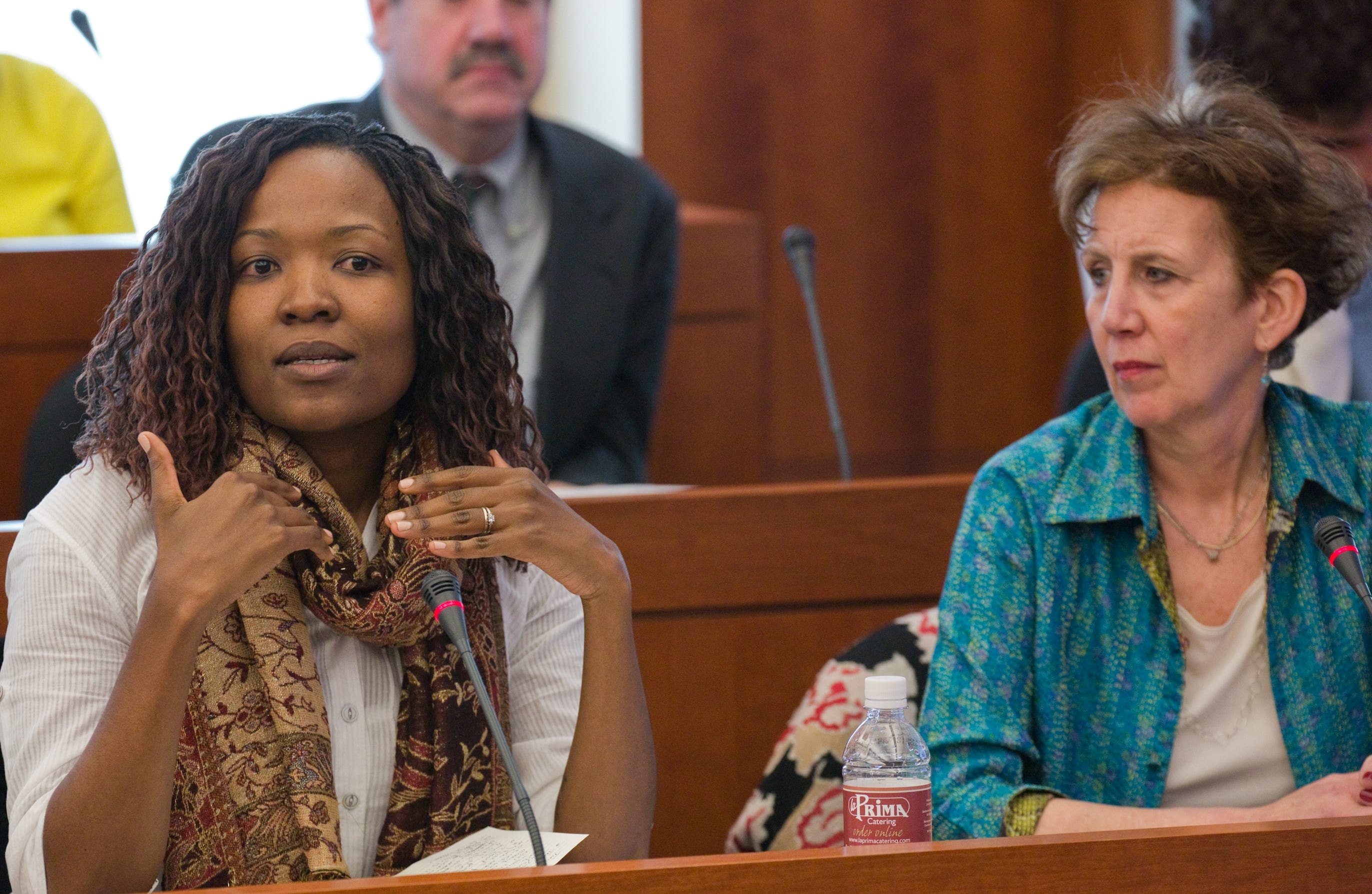![]() Today we feature a guest post from Judith Raine Baroody, Senior Resident Fellow at the German Marshall Fund of the U.S. Dr. Baroody has served in the Foreign Service since 1984, including her most recent post abroad in Paris. In this post, she discusses the roll she played in 1997 as the Public Affairs officer in Nicosia, when she helped to organize one of the first pan-Cyprian festivals since the country’s division in 1974.
Today we feature a guest post from Judith Raine Baroody, Senior Resident Fellow at the German Marshall Fund of the U.S. Dr. Baroody has served in the Foreign Service since 1984, including her most recent post abroad in Paris. In this post, she discusses the roll she played in 1997 as the Public Affairs officer in Nicosia, when she helped to organize one of the first pan-Cyprian festivals since the country’s division in 1974.
Diplomats in blue jeans, we gazed up anxiously at the September skies of Cyprus as we assembled chairs and sound equipment for the festival to bring together Greek- and Turkish Cypriots. It had been a dry year, but now dark clouds were gathering above us, over the grounds of the once-splendid Ledra Palace Hotel in the buffer zone that separated the two sides of the former British colony. There had been clashes between Greek Cypriots and Turkish Cypriots since 1963, when violence broke out in the capital of Nicosia. In 1974, the Greek government’s attempt to seize control led to military intervention by Turkey, which took over the northern third of the island. Since then, Greek Cypriots had not been allowed to cross into the north, nor Turkish Cypriots into the south. In 1996, clashes led to the death of two demonstrators; there was a constant threat of more violence. Now, in 1997, we were looking for ways to make peace in this heavily militarized country.

Photo by USAID Cyprus
I was the public affairs officer at the U.S. Embassy in Nicosia, so part of my job was to help the two communities get to know each other, to lay the groundwork for social reintegration once political conflicts were resolved so peace and stability could take root. Working with embassies of other countries, we nurtured a range of activities designed to bridge the two communities. The idea of this festival in the narrow strip of land where the two sides were allowed to gather was to showcase these grassroots projects. Under the U.S. Embassy’s leadership and the auspices of the U.N., the Swiss brought cold cuts, Germans supplied beer, French and Italians offered wine, and we laid on pizza and burgers. We arranged for Cypriot folk music, watercolor painting and traditional dancing. But now angry black rainclouds were rolling in; Turkish Cypriot authorities had blocked off roads and threatened to deny entry to the buffer zone. Maybe no one would come.

Photo by USAID Cyprus
An hour before the 4 p.m. start of the fair, Cypriots began to stream in through both checkpoints. They surged in even as the skies opened and a torrent began to pelt the drought-stricken soil. The Cypriots were thrilled to meet each other after three decades of separation. They talked excitedly in their common language of English about “the Cyprus Problem” as well as the more mundane commonalities of their lives as Cypriots. Children handed out carnations to kids from across the line. We pulled our electrical sound systems under the party tents and kept the music going—bouzoukis and drums in joyful clatter—and still they came, dancing, singing, celebrating the chance to mix with strangers from their own land, more than 4,000 in all. The downpour finally gave way to a clear, cool evening, and there was a palpable sense of renewal in the eastern Mediterranean air when the final chords faded. Fourteen years later, Cyprus is still divided. In 2004, the island was admitted into the European Union. In 2008, leaders of the two communities began negotiations under U.N. auspices to reunite the island and opened the cross points. Of all the other countries in which I’ve served in a 27-year Foreign Service career—Syria, Israel, Morocco, Chile, Iraq and now France—none had a single issue whose resolution would change every aspect of its citizens’ lives. Cyprus is known as “paradise with a problem.” For one stormy night in 1997, we were able to forget the problem and rejoice amid the downpour, with renewed hope of a good harvest and, some day, of lasting peace.

Photo by USAID Cyprus










